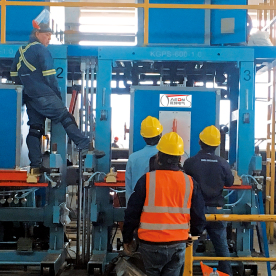In recent years, portable induction heating equipment has revolutionized various industries, from culinary arts to metalworking. This innovative technology has provided a new way to heat materials efficiently and quickly, making it a game changer for professionals and hobbyists alike. This article delves into the principles, benefits, applications, and future prospects of portable induction heating technology, emphasizing why it should be on your radar.
Understanding Induction Heating
Induction heating consists of generating heat through electromagnetic induction. This means that when an alternating current passes through a coil, it creates a magnetic field that induces an electric current in a conductive material placed within this field. The induced current (also known as eddy current) generates heat due to the material’s resistance. Unlike traditional heating methods that rely on direct flame or hot surfaces, induction heating focuses on the material itself, leading to faster and more efficient heating.
The Rise of Portable Induction Heating Equipment
The demand for portable induction heating equipment has surged in various sectors. Traditionally, induction heating systems were bulky and often stationary, primarily used in industrial settings. However, advancements in technology have led to the design and manufacturing of compact, lightweight, and portable units. These portable systems offer the functionality and efficiency of larger units but with the added advantage of mobility.
Key Features of Portable Induction Heating Equipment

The Future of Cooking and Metalworking: An In-Depth Look at Portable Induction Heating Equipment
1. **Compact Design**: Portable induction heaters are designed for easy transport, allowing users to move them from one location to another effortlessly. This is particularly advantageous for on-site jobs, including automotive repairs or metal fabrication.
2. **Energy Efficiency**: Induction heating is one of the most energy-efficient heating methods available. Since induction heaters only heat the material being processed, there is no wastage of energy on surrounding areas or equipment.
3. **Safety Features**: Many modern portable induction heating systems come with built-in safety features, such as automatic shutoff when overheating is detected, making them safer to use than traditional heating methods.
4. **Versatility**: These systems can be used for various applications, from soldering and brazing tasks to cooking and melting metals. This versatility makes them essential tools in both the culinary sector and manufacturing industries.
Applications of Portable Induction Heating Equipment
Portable induction heating equipment finds its niche in various fields. Here are some notable applications:
1. **Culinary Uses**: Chefs and culinary enthusiasts appreciate portable induction cookers for their precise temperature control and rapid heating capabilities. Whether boiling water or searing steak, induction cooking provides a consistent and controllable cooking experience. Portable induction units are convenient for catering events or outdoor cooking.

The Future of Cooking and Metalworking: An In-Depth Look at Portable Induction Heating Equipment
2. **Metalworking**: In the metalworking industry, portable induction heating equipment is commonly used for tasks like soldering, brazing, and melting metals. Its precision enables craftsmen to apply heat only where needed, reducing the risk of damaging surrounding materials.
3. **Automotive Repairs**: Mechanics often rely on portable induction heaters to remove seized bolts or fittings. The localized heat effectively expands the metal, allowing for easier removal without damaging the part itself.
4. **Jewelry Making**: Induction heating simplifies the process of melting and welding metals for jewelry creation. It allows artisans to control the temperature without risking overcooking or burning.

The Future of Cooking and Metalworking: An In-Depth Look at Portable Induction Heating Equipment
The Future of Portable Induction Heating Equipment
As technology continues to advance, the future of portable induction heating equipment looks promising. Innovations in materials and design will likely lead to even more efficient systems with enhanced capabilities. Additionally, we can expect improvements in user interfaces, making these tools even more accessible to those without technical backgrounds.
Furthermore, the increasing awareness of energy efficiency and environmentally friendly practices suggests that induction heating will gain more traction across various sectors. As society pushes toward sustainability, systems that require less energy and generate less waste are becoming more desirable.
Moreover, ongoing research into high-frequency induction technology could lead to smaller, more powerful units that further enhance the portability and performance of induction heating equipment.
Conclusion
Portable induction heating equipment stands at the crossroads of efficiency and versatility across multiple industries. Its application in cooking, metalworking, automotive repairs, and artistic endeavors illustrates its broad appeal. As technology progresses, we will likely see an even wider adoption of this transformative heating method. For those interested in efficiency, safety, and precision, investing in portable induction heating equipment could be the next step in enhancing their craft or profession.Durable HSS Blade for Metalworking

